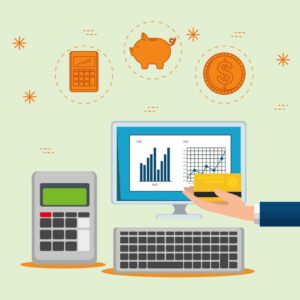Have you ever dreamed of starting your own business but found yourself short on cash to kickstart it? You’re definitely not the only one in this boat! A lot of people who want to start a business struggle with getting the money they need, especially if they haven’t saved up much. But don’t fret! That’s where startup business loans come into play.
In this blog, we’ll take a closer look at these loans and figure out how to get a startup business loan with no money to make your dreams come true. So, let’s get started on this exciting journey to funding your business idea!

What is a Startup Business Loan?
A startup business loan is money you can borrow when you’re just starting a new business. It’s like a helping hand for your business in the beginning. This loan is meant to cover all the important stuff you need at the start, like buying equipment, getting inventory, paying for marketing, and handling other costs to get your business up and running smoothly.
Imagine you’re starting a lemonade stand. You’d need money to buy the lemons, sugar, cups, and maybe even a little table to set everything up. That’s what a startup business loan does for bigger businesses. It gives you the funds to buy what you need to start making money.
So, to sum it up, a startup business loan is like a friend lending you money to start your business. It’s there to help you get everything you need so you can focus on making your business successful.
How Does a Startup Business Loan Work?
- Application Process: To apply for a startup business loan, you’ll first need to approach a financial institution like a bank, credit union, or an online lender. They will require you to provide detailed information about your business, which usually includes your business plan (a document outlining your business goals, target market, competition analysis, and financial projections), your personal credit history, and other relevant financial details.
- Approval Stage: Once you submit your application, the lender will review it thoroughly. They will assess your creditworthiness (how likely you are to repay the loan based on your credit history and financial stability) and evaluate the feasibility of your business idea. If the lender is convinced that your business is viable and that you’re capable of repaying the loan, they will approve your application.
- Loan Offer: Upon approval, the lender will present you with a loan offer. This offer will include all the essential terms and conditions of the loan, such as the loan amount (how much money you’ll receive), the interest rate (the percentage of the loan amount that you’ll pay as interest), and the repayment schedule (how and when you’ll need to repay the loan).
- Disbursement of Funds: If you agree to the terms outlined in the loan offer, you’ll formally accept it. Once accepted, the lender will disburse the loan amount directly into your business bank account. This money is now available for you to use for your startup expenses, such as purchasing equipment, hiring staff, marketing your business, and covering other initial costs.
- Repayment Terms: You are required to repay the loan according to the agreed-upon terms. This typically involves making regular monthly payments over a specified period, which could range from a few months to several years, depending on the loan amount and the terms negotiated with the lender. It’s crucial to adhere to the repayment schedule to maintain a positive credit history and avoid penalties or late fees.
A startup business loan is a financial tool that provides you with the necessary funds to start and grow your business. The process involves thorough planning, detailed documentation, approval based on creditworthiness and business viability, disbursement of funds, and timely repayment as per the agreed terms.

Funding Options for Startups With No Revenue
Now, let’s address the elephant in the room – how do you get a startup business loan with no money? While it may seem challenging, there are several funding options available for startups with no revenue:
- Personal Savings: If you have any savings, consider using them to fund your startup. This shows lenders that you’re committed to your business and willing to invest your own money.
- Friends and Family: Reach out to friends and family members who may be willing to invest in your business or provide a loan. Be sure to formalize any agreements in writing to avoid misunderstandings.
- Crowdfunding: Platforms like Kickstarter and Indiegogo allow you to raise funds from many people who believe in your business idea. Create a compelling campaign and offer incentives to attract backers.
- Grants and Contests: Look for grants and startup competitions that offer funding to new businesses. These can provide non-dilutive funding that doesn’t require repayment.
- Angel Investors: Angel investors are individuals who provide funding to startups in exchange for equity in the company. They often look for promising businesses with high growth potential.
- Venture Capital: Venture capital firms invest in startups with the potential for significant growth and returns. While they typically require a stake in your company, they can provide substantial funding.
How to Get a Startup Business Loan With No Money
Now that you’re familiar with the funding options available, let’s dive into how you can get a startup business loan with no money. Here are some steps to guide you through the process:
- Create a Solid Business Plan: Your business plan is like a roadmap for your startup. It needs to explain your business idea in detail, who your customers are, what your competitors are doing, how you plan to promote your business, how much money you expect to make, and exactly how you’ll use the loan money to grow your business.
- Build Your Credit: Even if you don’t have savings, having a good credit score can make lenders more likely to approve your loan application. Pay your bills on time, try to reduce any debts you have, and regularly check your credit report to make sure there are no mistakes.
- Establish Collateral or Guarantees: Since you don’t have money of your own to invest, lenders may ask for collateral or personal guarantees to secure the loan. This means you might have to put up something valuable, like property or equipment, to show that you’re serious about repaying the loan.
- Consider Alternative Lenders: Traditional banks can be cautious about lending to startups without a track record, but there are other options. Online lenders, microlenders, and community development financial institutions (CDFIs) might be more willing to work with you, especially if you can show a strong business plan and potential for growth.
- Look Into Government Programs: The Small Business Administration (SBA) has loan programs designed specifically for startups and small businesses. While they may require some investment from you, they can provide valuable funding and support to help your business succeed.
- Prepare a Strong Pitch: When you’re ready to meet with lenders or investors, be confident and clear about why your business is a great investment. Highlight the market opportunity, what makes your business unique, and your plans for growth. A compelling pitch can make all the difference in securing the funding you need.

Financing Options for Businesses With No Money
In addition to loans, there are other financing options you can explore if you have no money to invest in your business:
- Bootstrapping: Bootstrapping involves starting and growing your business with minimal external funding. You rely on revenue generated by the business to fund its operations and growth.
- Partnerships: Partnering with other businesses or individuals can provide access to resources, expertise, and funding. Choose partners who share your vision and can contribute to your success.
- Leasing or Renting: Instead of buying equipment or property outright, consider leasing or renting to conserve cash flow. This can lower upfront costs and provide flexibility as your business grows.
- Bartering: Bartering involves exchanging goods or services with other businesses without using money. It can be a creative way to acquire what you need without a financial investment.
Alternatives to Getting a Business Loan With No Money
If getting a business loan with no money seems too challenging or risky, there are alternatives you can consider:
- Start Small: Instead of going for a big loan right away, start small. Focus on proving that your business idea works and brings in money. By doing this, you might not need as much funding later on. This could mean starting your business from home, testing your product or service with a small group of customers, or finding ways to make money without a big investment.
- Bootstrapping: This means funding your business using your own resources. It’s about being smart with what you have, being disciplined, and making sure your business makes more money than it spends. This is all about being creative and resourceful. It might mean using your savings, finding ways to cut costs, or getting customers to pay you upfront.
- Delay Launch: If you need to, you can wait before starting your business until you’ve saved up enough money or found other ways to get funding. This gives you time to make sure your finances are strong. While it might be exciting to start your business right away, waiting can sometimes be a good idea. It gives you time to save money, build up your skills, and make sure your business is really ready to succeed.
- Alternative Revenue Streams: Look for ways to make money that don’t involve getting a loan. You could sell things online, offer services like consulting or freelancing, or find ways to make money from things you already own. This is about finding different ways to make money besides getting a loan. It could involve selling things, offering services, or finding creative ways to use what you already have to generate income.

Final words
Are you excited about starting your own business? It might seem scary to think about getting a loan when you don’t have any money, but don’t worry—it can be done! You just need to look into different ways to get money, show why your business idea is great, and be smart about using what you have.
Have you ever wondered how to get a startup business loan with no money? First, do some research to find out what funding options are out there. You can check with banks, look into government programs, or even ask friends and family if they can help. Once you know your options, think about how you can convince people to give you the money. You’ll need a solid plan that explains why your business will succeed and how you’ll use the money wisely.
Don’t be afraid to ask for advice from people who know about starting businesses. They can give you tips and help you avoid common mistakes. And remember, it might take time to find the right funding, so don’t give up! Stay focused on your goals and keep working towards making your business a reality.
With determination and careful planning, you can turn your dream into a successful business. Just keep learning, stay open to new ideas, and don’t be afraid to ask for help along the way. You’ve got this!
FAQ
Which banks offer startup business loans?
Many banks and financial institutions offer startup business loans, including:
- Bank of America
- Wells Fargo
- Chase
- Capital One
- TD Bank
- U.S. Bank
Be sure to compare rates, terms, and eligibility requirements before choosing a lender.
Can you get an SBA loan with no money down?
While the Small Business Administration (SBA) offers loan programs for startups and small businesses, they typically require some form of investment from the borrower. This could be a down payment or collateral to secure the loan. However, the SBA’s loan guarantee programs can make it easier for startups to qualify for loans from approved lenders.
Should You Get a Business Loan With No Money?
Deciding whether to pursue a business loan with no money depends on your circumstances, risk tolerance, and financial goals. Consider the following factors:
- Your ability to repay the loan
- The potential impact on your finances
- Alternative funding options available
- The growth potential of your business
Ultimately, weigh the pros and cons carefully and seek advice from financial professionals if needed.









